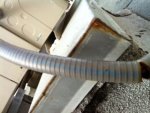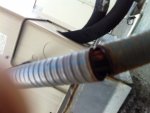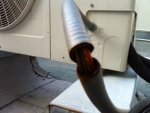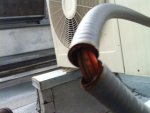Sorry, but that's not my problem. There's the general points that the code panels need to say what they mean to say, and that the readers refrain from trying to twist the code into saying what they think it ought to say. (My favorite example of the latter is the sudden Home-inspector driven concern over Romex in crawl spaces, ever since the code took romex out of 'damp' locations).
Though, I suppose, one could speculate someone running the phone wire, just for convenience' sake, through the same wire trough as the power wires in an industrial setting. That is, phone wire for the usual phone systen, rather than a similar looking data line that was used to control or monitor the equipment.
Just what, exactly, is the hazard posed by putting a low voltage wire in with a power wire? I think that is the concern here- along with understanding just what a 'power limited' circuit is for.
Induced voltages? So what? OK, I can see a desire to have the insulation rating be high enough that it's not compromised. Otherwise, the only circumstance where you would have an issue where the simple presence of voltage might fool a computer into thinking it was getting a control signal. This can happen with a PLC, but not with a relay; the induced voltage won't power a relay.
The 'separate the control from the power' doctrine can get really silly when the control circuit is using the exact same voltage as the power circuit; there are plenty of 'control' circuits using 120 volts out there. Even some thermostats. Trouble is, 120v on a thermostat wire looks just like 6v on a thermostat wire. Pictures may not lie, but they sure can leave out such details.
There's the concept of 'power limited' circuits to consider. In brief, these are circuits that have transformers whose impedence is so high as to limit the amount of current they can deliver. A dead short on the output side of the transformer will, by design, result in the transformer getting very hot, even failing .... a design deliberately choses to prevent the transformer from delivering too much power down the line. While this might be real important on an 'intrinsically safe' circuit in a hazardous location, I can't see much relevance for the household heat pump.
I'm going to 'return to the real world' to -again- put this all in perspective. Let's look at a household 'mini-split' system. You have the condenser outside, and an evaporator inside. The power for the evaporator comes from the condenser, and the thermostat is mounted near the indoor unit. This means that you will have, running from the outdoor unit to the indoor unit, a set of HVAC tubes, a thermostat wire, and a power cable. Since they start and finish at pretty much the same places, it's certain they'll be run together. Some would have you believe that you can run that thermostat wire right next to that piece of romex for fifty feet .... but have an objection to running them together through the same sleeve of flex for the two feet between the house and the outdoor unit. That objection is just plain silly.





